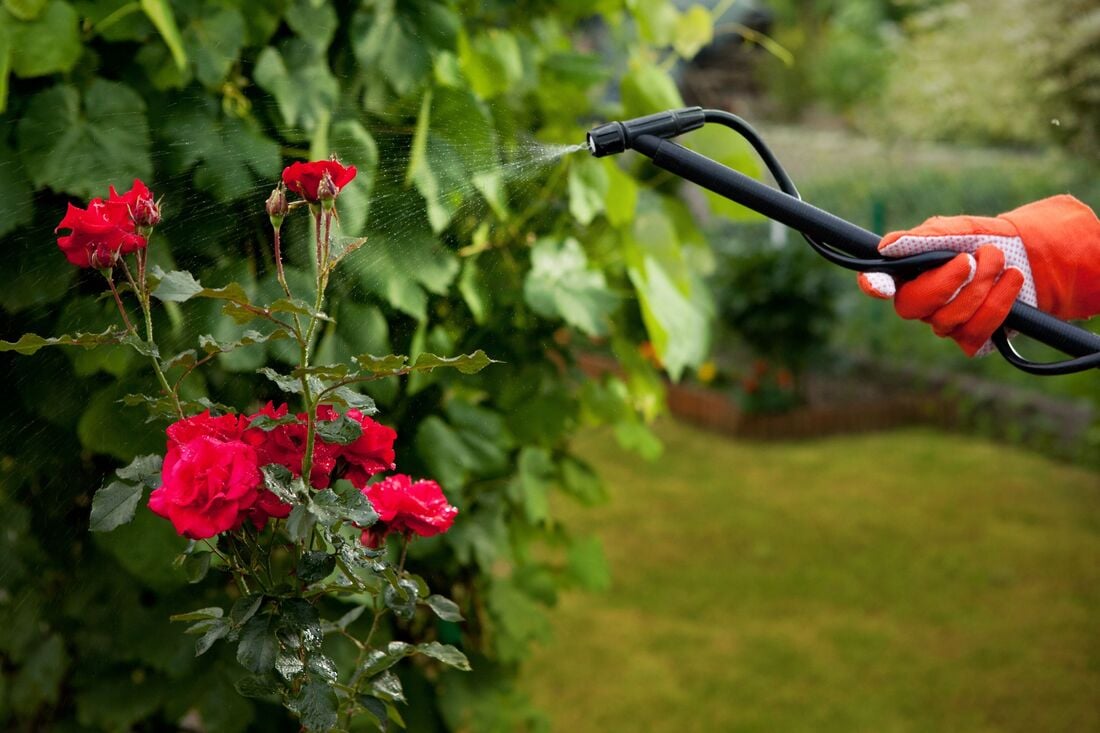Gypsy Moths are some of the most destructive species to ever be introduced to the United States. They devour leaves and can defoliate, weaken and kill nearly 300 different species of trees – and have become especially prevalent in the northeastern part of the country. To date, they’ve infected almost 75 million acres of forest.
At one point in the late 1990’s the infestations became so problematic, that the USDA launched a campaign called ‘Slow the Spread’ which was aimed at drastically reducing the spread of gypsy moths. They even made a law that requires homeowners to inspect their homes and belongings for eggs. Simply put – removing these pests has not only become paramount to the survival of your landscape – it’s the actual law.
Gypsy Moths frequently infest areas in the Spring by feeding on the leaves of trees and shrubs. By killing the plant’s leaves, they destroy a tree’s ability to feed itself. The natural result becomes defoliation and in most cases - the outright death of the tree itself. What makes them even worse is that younger caterpillars have hairs that contain a specific kind of histamine that can be very allergenic and present health risks to people living near them.
What you can do
The good news is that there is a wide range of ways you can both prevent and beat back Gypsy Moths – although those solutions are those that must be applied quickly and are – as always –
best deployed by a professional.
With that said, if you live in an area where infestation isn’t quite as prevalent, there are a few DIY steps you can take to protect your tree. Here are a few:
-Try to attract more birds to your property
Birds love to eat Gypsy Moths – especially Blue Jays, Blackbirds, Nuthatches, Cuckoos, and the like. Basically – most to all of your basic northeastern/New Hampshire style species. You can attract birds several different ways, but the good old bird feeder can work wonders. Enroute to and/or leaving the premises – they’ll likely find several tasty caterpillars to chew on the way through. And who wants salad when you can have steak?
-Keep your yard clean
Gypsy Moths often lay their eggs in detritus, so it’s always a good idea to keep your lawn clean and looking fresh. Get rid of any old wood, dead branches and stumps. Sometimes it’s even a good idea to clear out old, ratty mulch, too. These are the places you’ll most likely find eggs, so the more stuff you have on the ground, the higher risk you carry. Also check the less-traveled areas on your trees – such as ivy, bark flaps and dead branches. Gypsy Moths love nooks and crannies.
-Killing egg masses on your own
Gypsy Moth egg masses look like a little tan blobs that stick to specific areas of a tree. Like we mentioned above – you’ll be most likely to find these deposits in the nooks and crannies of trees. Once you find them – they can be killed or removed. However, should you choose to remove the masses physically, there are two important things to remember.
First is to always wear a safety mask and glasses when you’re scraping off those eggs. You can actually scrape off some of the hairs on the skin and eggs of the larvae, which can expose you to a measure of health risk. The second thing to do is to dispose of all egg masses in some sort of container and make sure they’re destroyed. Simply scraping them to the ground doesn’t always do the trick and can result in Gypsy Moths burrowing into the ground and other areas around the tree.
-Call a pro
The most effective way to kill off Gypsy Moths is through using special pesticides. And anytime you use the ‘p’ word – you really should get someone well versed who will know just how to attack the problem. In this case specifically it’s almost doubly important just because of the health risks associated with Gypsy Moths and the frequency and volume of pesticides you’re going to have to use to bring the problem under control. So if it has anything to do with chemicals – call someone who knows what they’re doing!
The key takeaway is that you’ll have to combat these baddies at every point in their life cycle in order to have success. Staying proactive about preventing their emergence before problems start is paramount. Taking immediate action when you do discover an infestation is even more important. Good luck!



